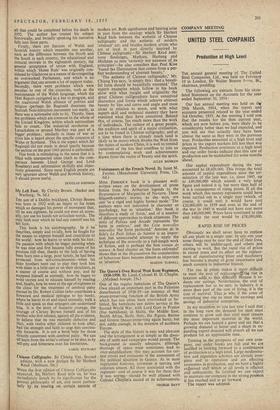Chinese Calligraphy. By Chiang Yee. Second - edition, with a new
preface by Sir Herbert Read. (Methuen, 30s.)
WHEN the first edition of Chinese Calligraphy appeared, Sic Herbert Read tells us, he was Immediately struck by its significance for the general philosophy of art, and more particu- larly by its bearing on certain aspects of modern art. Both significance and bearing arise in part from the analogy which Sir Herbert Read finds between the (esthetic of Chinese calligraphy and the aesthetic of modern 'abstract' art; and besides modern artists who are at least in part directly inspired by Chinese calligraphy—Sir Herbert Read men- tions Soulanges, Mathieu, Hartung and Michaux as men 'certainly not unaware of its principles'—he also considers that Paul Klee 'found the illumination that comes from a per- fect understanding of abstract beauty.' 'The aesthetic of Chinese calligraphy,' Mr. Chiang Yee says, 'is simply this : that a beauti- ful form should be beautifully executed.' The superb examples which follow in his book show with what insight and originality the great Chinese calligraphers have conceived characters and forms which achieve ab'stract beauty by line and curve and angle and mass alone in relation to space, and with what superb skill and technical mastery they have executed what they have conceived. Behind this, of course, lies much more than the work of individuals. The culture of a great people, the tradition and spirit of a major civilisation, are to be found in Chinese calligraphy; and at a time when there is already much (and is likely to be more) which divides the West from the rulers of modern China, it is well to remind ourselves of the ties that contlhue to join us by contemplating work and achievements drawn from the realm of beauty and the spirit.
JULES MENKEN










































 Previous page
Previous page